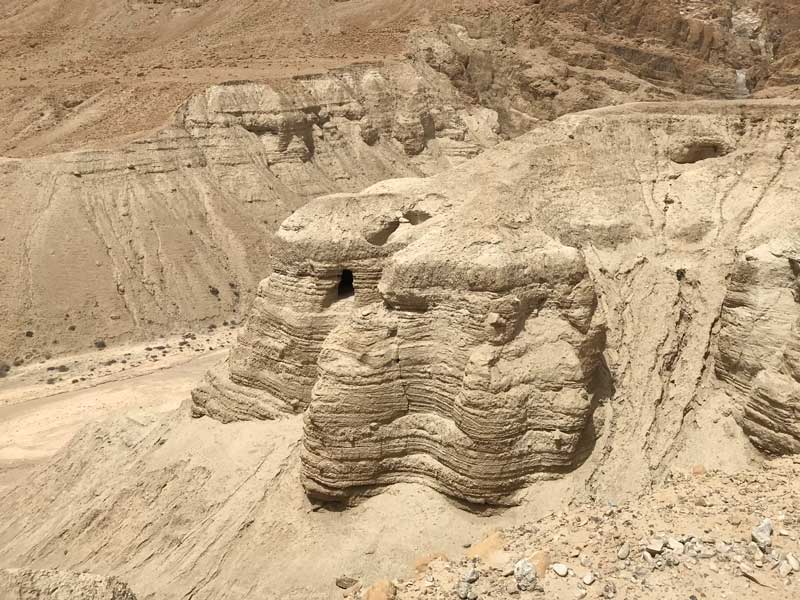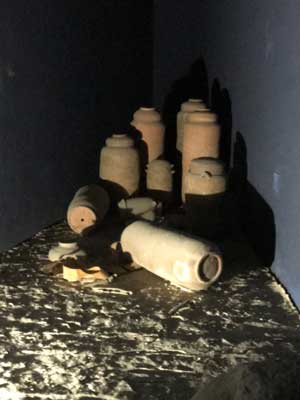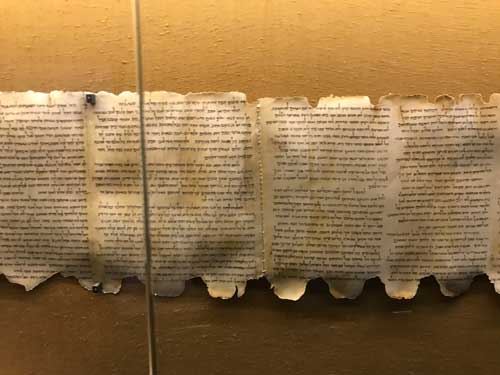The ancient Essene site of Qumran is about 1.5km from the northwest shore of the Dead Sea. With even earlier origins, the settlement was continuously inhabited from around 120BC until 68AD when it was destroyed by the Roman Army. Its amazing gift to the world comes from the documents its members managed to hide from those Roman forces.
The first Qumran cave was discovered in 1946 by a Bedouin Shepherd looking for a wayward animal. From then to 1956, a total of over 900 scrolls were then found in eleven such caves in the local area. Of particular interest to us, as Christians, are the scrolls of Old Testament books that are present amongst the finds. About a quarter of them (around 220 in all) are of biblical material – all of the OT books, in fact, apart from Esther and Nehemiah. The most common copies are of Psalms and Deuteronomy. The most complete scroll is of the book of Isaiah, referred to as 1Qlsa, that was found in Cave 1. It is dated to around 100-150 BC – which is about 1000 years older than the previously held manuscript we had of the book.
Why Qumran is so Important
One of the recurring attacks on the reliability of the Old Testament has always been that the manuscripts we have are unreliable. ‘Surely,’ the argument goes, ‘these manuscripts have been changed and corrupted through many generations, and, thus, what we have now may well bear no correlation to what was originally written?’
Well, Qumran wonderfully responds to those challenges. Here, in these ancient jars, were discovered copies of OT books that were, in some cases, many centuries older than any we had ever had before. And, what was found in these far older copies was almost identical to the manuscripts that we had previously relied on.
It is now clear that such was the reverence given to the Scriptures, such were the careful techniques used in copying them – both amongst the Jews in general and the Jewish sect of Essenes in Qumran – that each successive copy was virtually identical to what came before. Some small mistakes do creep in. For example, occasionally, a scribe would accidentally jump from a word that appeared on one line to that same word where it occurred on the line below and leave out whatever was written in between. But, thanks to Qumran, we now know these mistakes were few and far between. When the scrolls found there were compared with the manuscripts that had previously been our oldest copies, the accuracy of their content’s transmission was found to be truly remarkable.
That simple shepherd, setting out to find a lost goat that day, stumbled upon one of the most important discoveries ever made for OT biblical scholarship. Thanks to this treasure in jars of clay, we can now more assuredly affirm the treasure that is ours in all the pages of God’s word.




